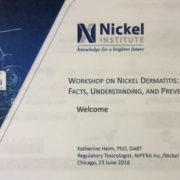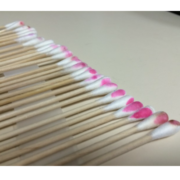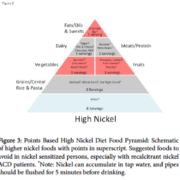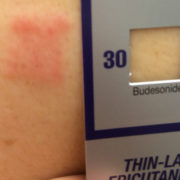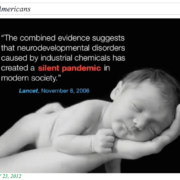Test your Paraphenylediamine (PPD) Savvy
/in Allergic Contact Dermatitis Facts, Allergic Contact Dermatitis Information/by Sharon Jacob MDFibroblasts and oral-induced tolerance against nickel…
/in Allergic Contact Dermatitis Facts, Nickel Contact Dermatitis/by Sharon Jacob MD‘Differences in human gingival and dermal fibroblasts may contribute to oral-induced tolerance against nickel’…
present results unveil new aspects of oral-induced tolerance and provide additional information for current knowledge, which indicates that oral Ni2 challenge before piercings may prevent Ni hypersensitivity…
Read more here:http://www.ncbi.nlm.nih.gov/pubmed/27264456
A fragrance free bug spray
/in Uncategorized/by Sharon Jacob MDFinding a fragrance free bug spray can be quite a challenge… this is one that is designated by the manufacturer as “no fragrance”
Nickel Workshop
/in Allergic Contact Dermatitis Facts, Regulation and Policy/by Sharon Jacob MDOn June 23, 2016, a historic event occurred – the first US Nickel Workshop. Thought leaders from medicine, industry and regulation came together to discuss the issue of nickel dermatitis, appropriate uses of nickel, and the integral role of nickel in society at the first North American Workshop on Nickel Dermatitis. This workshop was sponsored and coordinated by the Nickel Institute, who brought toxicologists and dermatologists together with conscientious companies representing various consumer product sectors. The group stressed the importance of nickel release, not nickel content in determining risk of becoming allergic to nickel and having a nickel dermatitis reaction if you are already allergic to nickel.
Removing nickel from our environment is not possible, because it is one of the most abundant metals on our planet and it has many beneficial uses where it cannot be reasonably substituted (e.g. stainless steel) . What is possible, though, is to use it in the safest ways possible. For example, nickel is safely used in several types of stainless steels. Nickel is also used as nickel-plated carbon fibers in the composite case of personal cell phones to keep our brains safe from the electromagnetic energy generated from by cell phone use. A top priority was discussed at the nickel workshop of removing high nickel-release materials from use in piercing posts (used in jewelry) by using appropriate low nickel-releasing materials (e.g. surgical stainless steel, high quality gold, etc.) since piercing directly introduces releasednickel to an open wound. This is especially important for children who, if sensitized, have a lifetime to deal with the consequences.
The Nickel Institute will be putting together a full report from the Nickel Workshop, which will be made available online on the Nickel Institute website at https://www.nickelinstitute.org Dr. Jennifer Chen, MD, a dermatologist from Stanford University, presented the background of nickel allergy in the US at the Nickel Workshop in addition to developing an outreach education webinar on this topic available to the public https://www.dermatitisacademy.com/webinars/ The webinar discusses that EU regulations have decreased nickel allergy in ear pierced young women from 16.6% down to 6.9%. The estimated savings of $2 billion over the last 20 years is massive and that could translate into an even bigger savings with the US population.
At the Nickel Workshop, Dr. Sharon Jacob, MD, a dermatologist from Loma Linda presented the situation of nickel dermatitis in children in North America, noting that nickel allergy is found at an early age and is thought to be largely due to ear piercing in young girls. She reported that an estimated 11% of the US general population is currently sensitized to nickel, which includes an estimated 8,133,603 children! She also stated that a significant proportion of these could be prevented by utilizing safer metals in piercing. Dr. Jacob ended her presentation at the Nickel Workshop with a slide that said:
‘You can’t tell an adult they can’t pierce and smoke… but you can protect a child.’
To learn more about nickel allergy and sensitization, please visit the Dermatitis Academy page dedicated to nickel https://www.dermatitisacademy.com/nickel-page/ which includes information on the low nickel diet, how to DMG test metal objects to screen for nickel release, a quiz on sources of nickel and a general population questionnaire on nickel sensitization. https://emg.wufoo.com/forms/nickel-allergic-contact-dermatitis-survey/
DMG sensitivity
/in Nickel Contact Dermatitis/by Sharon Jacob MDThe DMG has modest sensitivity:
“The sensitivity of the DMG test was 59.3% and the specificity was 97.5% based on DMG-test results and nickel release concentrations determined by the EN 1811 reference method. … The EN 1811, a European standard reference method developed by the European Committee for Standardization (CEN), is fine-tuned to estimate nickel release around the limit value of the EU Nickel Directive from products intended to come into direct and prolonged skin contact.”
Direct and prolonged contact with FREE RELEASED nickel is what leads to sensitization and skin rashes (allergic contact dermatitis). Because of the DMG sensitivity issue (not always detecting) – consumers should not rely on this 100% but rather use if for screening.
Past exposure studies may have underestimated nickel release from consumer items.”
Read more here:
http://www.ncbi.nlm.nih.gov/pubmed/20536475
From a clinical impact standpoint, if the object turns pink with the DMG test – best to avoid it – but be aware that it is not 100%… DMG sensitivity is only 59.3%
learn about DMG testing here:
https://www.dermatitisacademy.com/nickel-sources/
Low Nickel Diet article
/in Allergic Contact Dermatitis Information, Low Nickel Diet/by Sharon Jacob MDLow Nickel Diet: A Patient-Centered Review
‘ A meta review by Jensen specifically assessed elicitation of SCD due to nickel ingestion, and found that 1% of those sensitized to nickel react to the nickel content of a “normal” diet, defined as 0.22 mg, 0.35 mg, or 0.53 mg [12]. Furthermore, a dose-response relationship was revealed showing 10% of nickel sensitized patients responding to exposures between 0.55 mg and 0.89 mg. Such low exposures can be easily attained by consuming foods high in nickel content. …many patients sensitized to nickel are unaware that dietary exposure may play a role in their morbidity.’ A low nickel diet may help them get their rashes better.
To read more about the Low Nickel Diet: A Patient-Centered Review click here:
A day in the life of a patch tester – Steroid allergy – SURPRISE!
/2 Comments/in Allergic Contact Dermatitis Information/by Sharon Jacob MDSteroid allergy: I saw a patient with ‘recalcitrant eczema’ that was doing fairly well, flares here and there. Being told there’s nothing on my back – should mean exactly that – but when I checked – there was a 2+ positive reaction.
I can not stress enough how nice it is to have either a photo or a map of patch placement to be able to go back and figure out what chemical is causing that reaction…
So we aligned a ‘decoder’ grid – and lo and behold were able to identify the placement of budesonide, a class B steroid (steroid allergy). Asked about the current treatment regimen and low and behold the patient is using a class B steroid daily – well, we won’t be doing that anymore…
There are three corticosteroids on the Food and Drug Administration approved (for adults) patch test – they are a recognized allergens…https://www.dermatitisacademy.com/corticosteroids/
So, what is the surprise in this?
Well, the patient was patch tested by another provider 82 days earlier – the steroid had not shown up as a positive during the patch procedure week.
Is this commonly reported? No. could it have been potentially missed? Yes.
Conclusion – always watch for late delayed reactions and “flare up” responses… especially in steroid allergy, as steroids have anti-inflammatory properties.
Silent pandemic
/in News/by Sharon Jacob MDLearn about one of the most important environmental campaigns in history…. the environmental working group studied cord blood samples and provide evidence that we are in the midst of a silent pandemic.
“Aught to do all we can to minimize exposures”… “industrial pollution begins in the womb”…”women use an average of about 12 personal care products a day and that exposes them to more than 160 chemical ingredients, some of them rather toxic, day after day after day”.
“62,000 chemical were ‘grandfathered in'”
“…found 287 chemicals in just those 10 Americans — 28 different waste byproducts — 47 different consumer product ingredients — most disturbing of all – 212 industrial chemicals and pesticide break down products that had been banned 30 years before… ” in UMBILICAL CHORD BLOOD! Speaking to the silent pandemic.
“babies are born pre-polluted with as many as 300 industrial chemicals in their bodies.” The math shows … “We have more health effects than we have chemicals, why is that? … many of these chemicals have multiple toxic effects.” And, “Only 5 chemicals have been banned or restricted by EPA under the law“! Moreover, “80% of all new chemicals approved within 3 weeks”
There is an “84% increase in acute lymphocytic leukemia“…
The Kid-Safe Chemicals Act (KSCA) of 2008 – “Requires that chemical be safe for CHILDREN and others who are sensitive”. “Assumes chemicals are harming people until PROVEN OTHERWISE“. “Prioritizes SAFETY REVIEWS, BANS, and PHASE-OUTS based on what’s in people and hazardous”. Addressing the silent pandemic.
…historic moment … AN UNPRECEDENTED COALITION!!!
Learn more:

